Configuring Facebook Portal Authentication
CHAPTERS
3. Test the Configuration Result
|
|
This guide applies to: Wireless Controller (AC500/AC50) |
On the latest Wireless Controller AC500/AC50 (V1_170706 or above), we newly develop a powerful portal feature: Facebook Portal. To help users easily understand and enjoy the new feature, this configuration guide detailedly introduces what Facebook Portal is and how to configure Facebook Portal.
1.1Facebook Portal Introduction
In Facebook Portal authentication, when customers connect to your Wi-Fi, they will be redirected to your Facebook page. To access the internet, customers need to pass the authentication on the page.
The following introduces the main advantages of Facebook Portal, which may help you determine when or whether you should choose Facebook Portal on your network.
Advertising Business
Users connected to your Facebook Wi-Fi will be redirected to your Facebook page where displays the desired information, such as pictures, videos, announcements and your phone number for customer feedback. Additionally, users can log in with their Facebook accounts and check in on your Facebook page and leave a record in the Timeline, which may help advertise your business.
Simple Network Access Authentication
Some countries and regions would require network service providers to authenticate users. For example, Russia requires all users to be authenticated before accessing the public Wi-Fi. Facebook Portal is a simple and effective access authentication method. With Facebook Portal, your customers only need to connect to your SSID, and log in to their Facebook accounts or skip check-in to get authenticated.
Feedback Collection
On your Facebook page, you can collect the customers’ comments, likes and feedback, which are very helpful for your service quality improvement.
1.2Network Topology for Facebook Portal
The following figure shows the network topology for Facebook Portal.
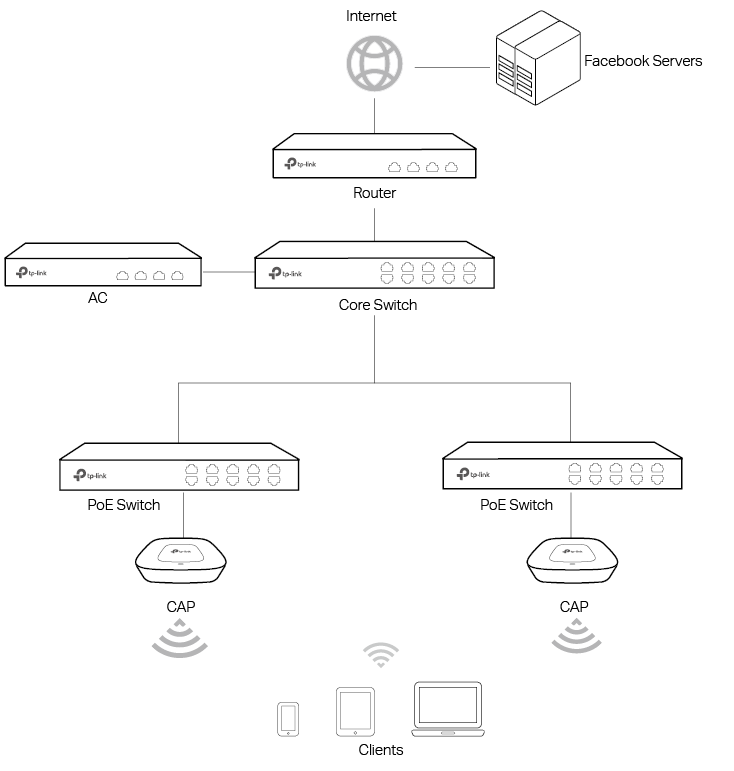
1.3Facebook Authentication Process
The process of accessing the internet via Facebook Portal authentication is as follows:
1)Users connect to the SSID for Facebook Portal and obtain the Facebook authentication page.
2)On the authentication page, there are two available authentication modes:
•Facebook Login Mode: Users need to log in to their Facebook accounts and check in on your Facebook page.
•Skip Mode: Users needn’t log in to their Facebook accounts. To get authenticated, they only need to enter a Wi-Fi code or simply skip the sign link.
3)After authenticated, users will be redirected to the authentication result page. They can continue to visit your Facebook page.
This chapter introduces how to configure Facebook Portal. The configuration overview is as follows:
1)Upgrade the firmwares.
2)Configure Facebook page.
3)Create SSID on AC.
4)Configure the default gateway and DNS on AC.
5)Configure Facebook Portal on AC.
2.1Upgrade the Firmwares
To get the newly developed Facebook Portal feature, make sure that both of your AC and CAP are upgraded to the latest firmwares:
AC: V1_1707076 or above
CAP: V1_170601 or above
Go to the download center http://www.tp-link.com/en/support/download-center and search your AC and CAP models. Then download the latest firmware files one by one and upgrade the AC and CAPs using the proper downloaded firmware files.
2.2Configure Facebook Page
If you already have a Facebook page, you can skip this section. If not, follow the steps below to create a Facebook page:
1)Go to the Facebook official website www.facebook.com and create a new account with your email or phone number.
2)Log in with your new account.
3)In the CREATE section at the bottom left corner, click Page.
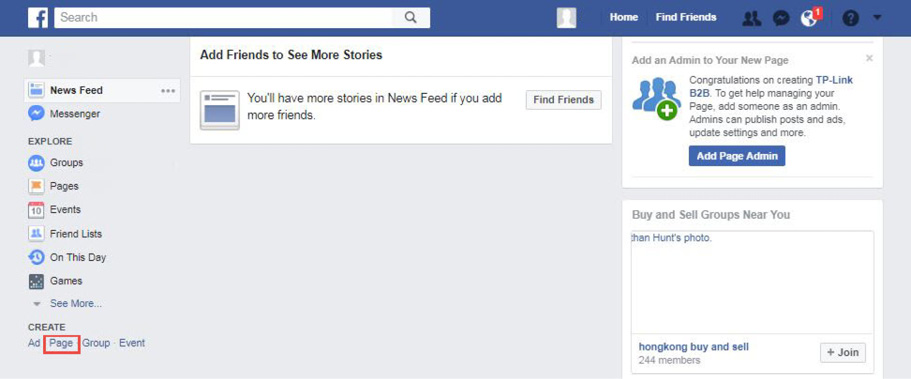
4)The following window will appear. Choose a type of Facebook page to be created. The available options include Local Business or Place, Company, Organization or Institution and so on.
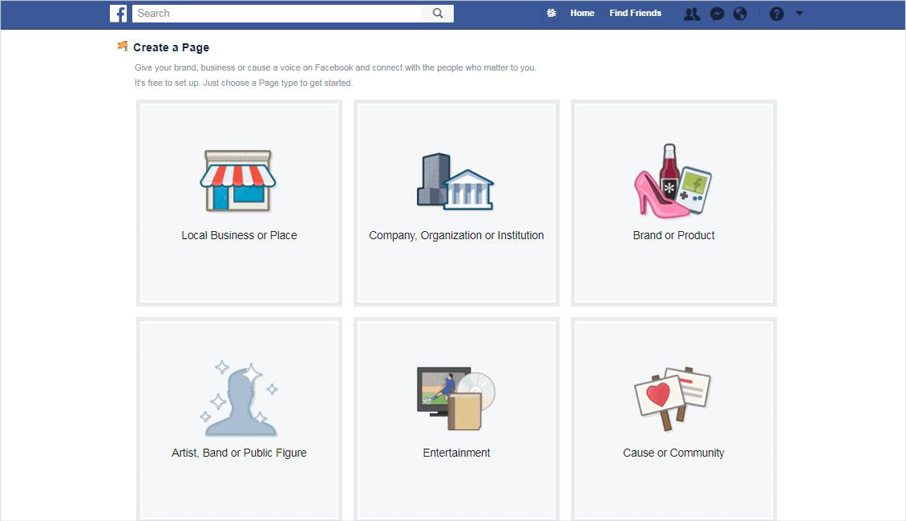
5)Enter the required information and click Get Started. The following figure takes Local Business or Place as an example. Then the Facebook page will be created.
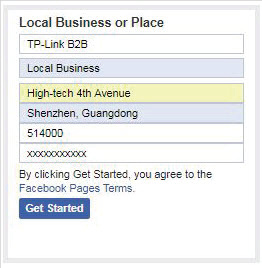
6)Customize your Facebook page according to your actual needs.
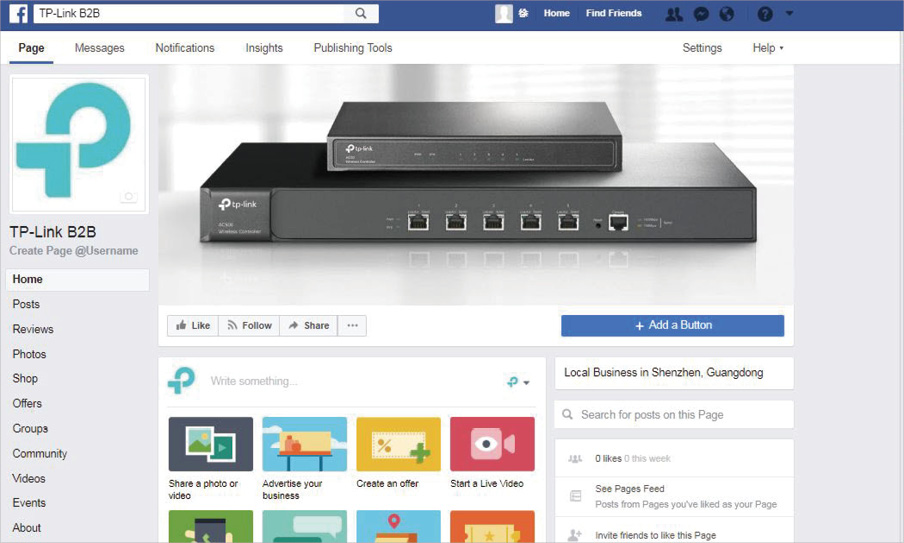
7)Go to the Settings page and make sure that Page Visibility is set as Page published, so that users can access your Facebook page.

2.3Create SSID on AC
Follow the steps below to create an SSID for Facebook Portal and bind the SSID to the CAP:
1)Go to Wireless > Wireless Service and click Add to load the following page. Specify the required parameters for the Facebook Wi-Fi and click OK.
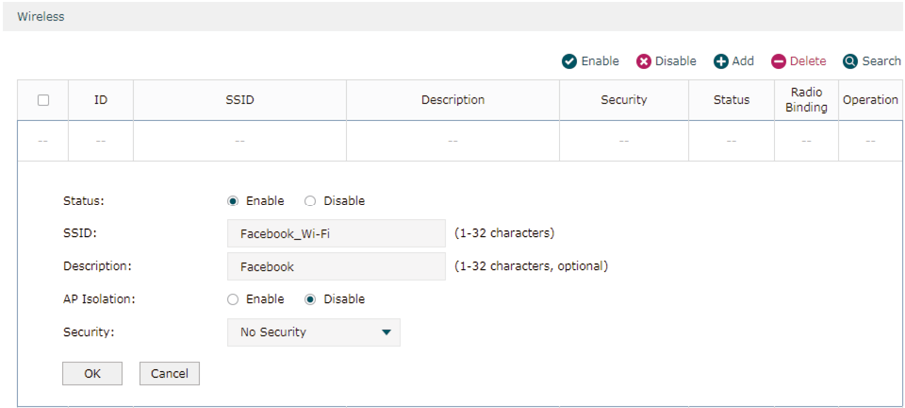
2)The SSID is created successfully. Click .

3)Select the CAP and click  to bind the SSID to the CAP.
to bind the SSID to the CAP.

2.4Configure Default Gateway and DNS on AC
To ensure the AC can communicate with the Facebook servers, you need to set correct default gateway and DNS on your AC.
Go to Network > Interface and click to edit the interface which is connected to the gateway router. Specify the correct Default Gateway address and DNS address according to your actual network environment. Click OK.
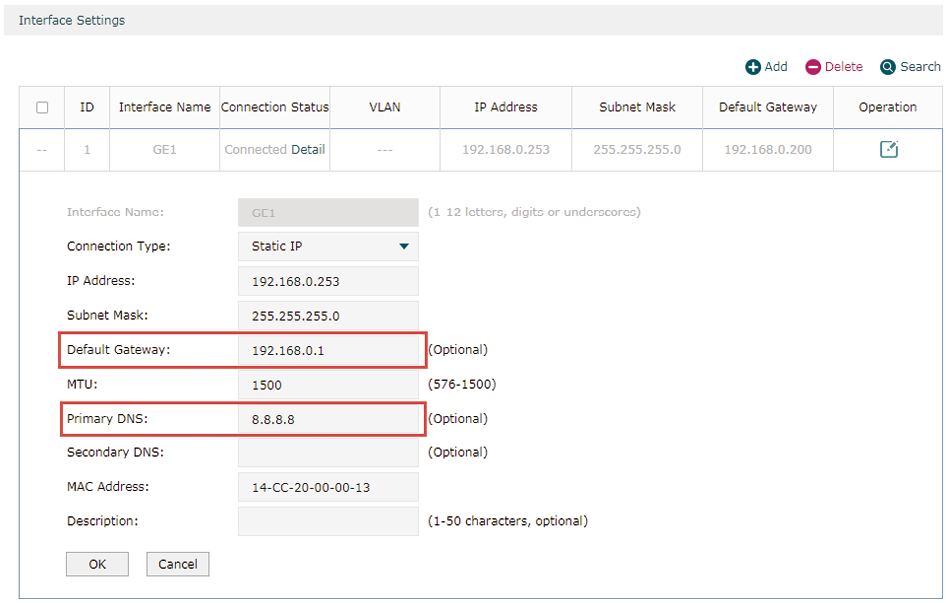
2.5Configure Facebook Portal on AC
Go to Authentication > Portal Authentication > Facebook and click Add to load the following page.
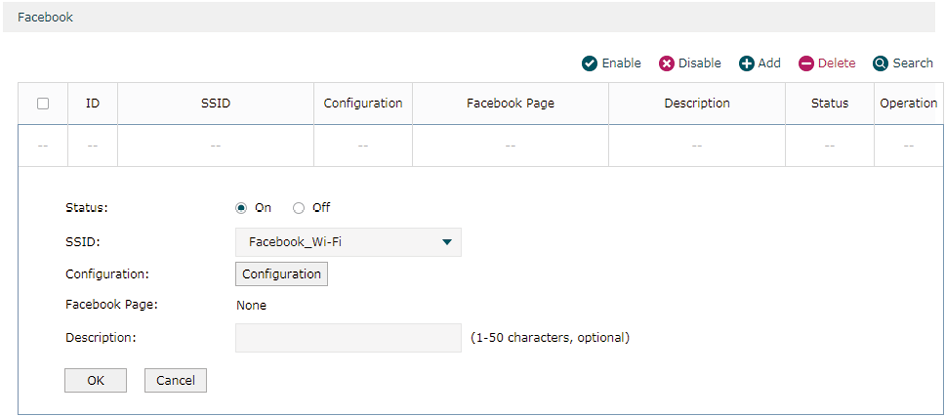
Follow the steps below to configure Facebook Portal:
1)Enable Facebook Portal and select an SSID for Facebook Wi-Fi.
2)Click the Configuration button and AC will automatically connect to the Facebook server.
3)If you have been logged in to Facebook, you can skip this step and directly refer to the step 4). If not, the Facebook login page will appear. Enter your account information to log in.
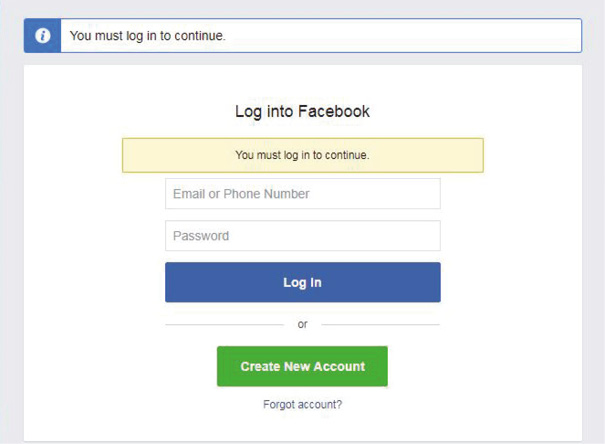
4)The following page will appear. Configure the required parameters according to the help information on the page. For example, select Facebook Page as TP-Link B2B, set Bypass Mode as Require Wi-Fi code, and set Session Length as Five hours. Click Save Settings.
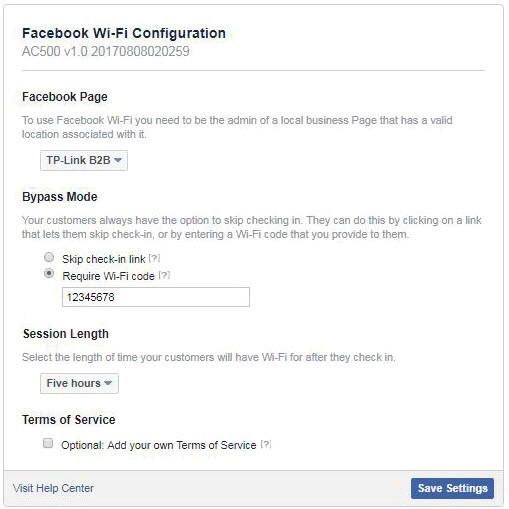
5)After the Facebook page is successfully got by the AC, the name of the Facebook Page will be displayed on the AC. Click OK.
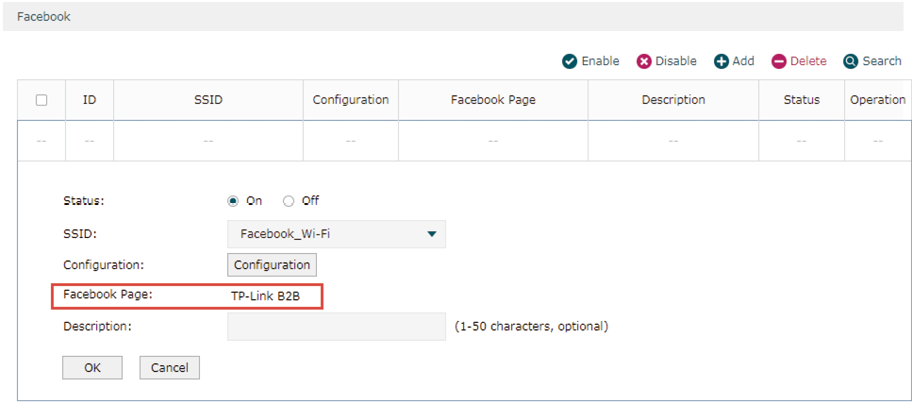
3Test the Configuration Result
After all configurations are completed, you can follow the steps below to test whether your Facebook Portal works normally.
1)Enable the Wi-Fi feature of your mobile phone.
2)Search and connect to the SSID for Facebook Portal.
3)The default web browser on the mobile phone will pop up and the Facebook authentication page will appear.
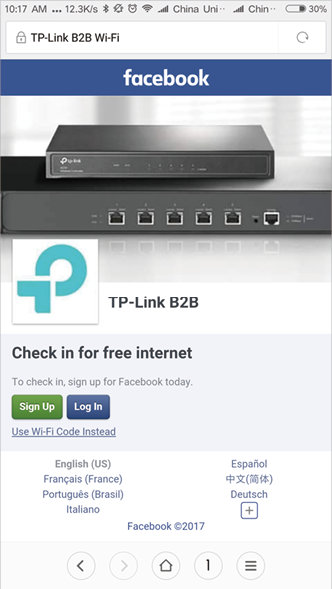
|
|
Note: •Generally, the web browser pops up automatically. But if the web browser does not pop up, you can manually launch the web browser and visit any http website. Then the authentication page will appear. •In Facebook Portal, all the https websites are available before authentication. So it does not mean that you have passed Facebook Portal authentication if you can access an https website. |
4)To pass the authentication, log in with a Facebook account or choose Use Wi-Fi Code Instead. For example, you can choose Use Wi-Fi Code Instead.
5)The following page will appear. Enter the Wi-Fi code: 12345678. Click Use Code.
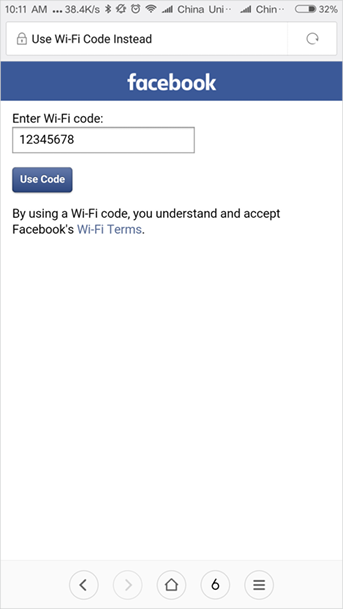
6)After authenticated, you will be redirected to the authentication result page, and you can stay on this page or continue browsing.
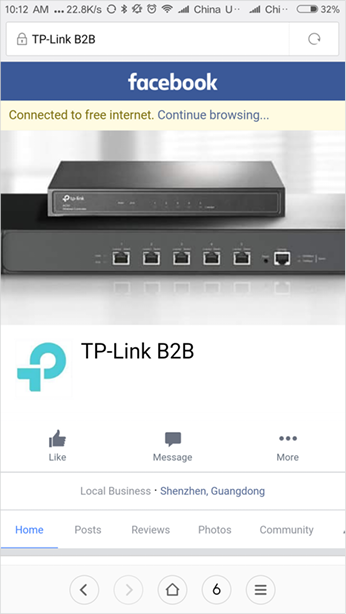
If all the steps above are completed, the Facebook Portal feature works normally.